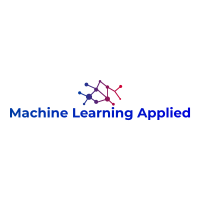Machine Learning Papers: Generative Adversarial Networks and Autoencoders
An Introduction to Variational Autoencoders - Kingma and Welling 2019
Variational autoencoders provide a principled framework for learning deep latent-variable models and corresponding inference models. In this work, we provide an introduction to variational autoencoders and some important extensions.
GraphVAE: Towards Generation of Small Graphs Using Variational Autoencoders – Simonovsky and Komodakis 2018
Deep learning on graphs has become a popular research topic with many applications. However, past work has concentrated on learning graph embedding tasks, which is in contrast with advances in generative models for images and text. Is it possible to transfer this progress to the domain of graphs? We propose to sidestep hurdles associated with linearization of such discrete structures by having a decoder output a probabilistic fully-connected graph of a predefined maximum size directly at once. Our method is formulated as a variational autoencoder. We evaluate on the challenging task of molecule generation.
BAGAN: Data Augmentation with Balancing GAN – Mariani et al. 2018
Image classification datasets are often imbalanced, characteristic that negatively affects the accuracy of deep-learning classifiers. In this work we propose balancing GAN (BAGAN) as an augmentation tool to restore balance in imbalanced datasets. This is challenging because the few minority-class images may not be enough to train a GAN. We overcome this issue by including during the adversarial training all available images of majority and minority classes. The generative model learns useful features from majority classes and uses these to generate images for minority classes. We apply class conditioning in the latent space to drive the generation process towards a target class. The generator in the GAN is initialized with the encoder module of an autoencoder that enables us to learn an accurate class-conditioning in the latent space. We compare the proposed methodology with state-of-the-art GANs and demonstrate that BAGAN generates images of superior quality when trained with an imbalanced dataset.
Data Augmentation Using GANs – Tanaka and Aranha 2019
In this paper we propose the use of Generative Adversarial Networks (GAN) to generate artificial training data for machine learning tasks. The generation of artificial training data can be extremely useful in situations such as imbalanced data sets, performing a role similar to SMOTE or ADASYN. It is also useful when the data contains sensitive information, and it is desirable to avoid using the original data set as much as possible (example: medical data). We test our proposal on benchmark data sets using different network architectures, and show that a Decision Tree (DT) classifier trained using the training data generated by the GAN reached the same, (and surprisingly sometimes better), accuracy and recall than a DT trained on the original data set.
Multi-Level Variational Autoencoder: Learning Disentangled Representations from Grouped Observations - Bouchacourt et al
We would like to learn a representation of the data which decomposes an observation into factors of variation which we can independently control. Specifically, we want to use minimal supervision to learn a latent representation that reflects the semantics behind a specific grouping of the data, where within a group the samples share a common factor of variation. For example, consider a collection of face images grouped by identity. We wish to anchor the semantics of the grouping into a relevant and disentangled representation that we can easily exploit. However, existing deep probabilistic models often assume that the observations are independent and identically distributed. We present the Multi-Level Variational Autoencoder (ML-VAE), a new deep probabilistic model for learning a disentangled representation of a set of grouped observations. The ML-VAE separates the latent representation into semantically meaningful parts by working both at the group level and the observation level, while retaining efficient test-time inference. Quantitative and qualitative evaluations show that the ML-VAE model (i) learns a semantically meaningful disentanglement of grouped data, (ii) enables manipulation of the latent representation, and (iii) generalises to unseen groups.
Objective-Reinforced Generative Adversarial Networks (ORGAN) for Sequence Generation Models - Guimaraes et al
In unsupervised data generation tasks, besides the generation of a sample based on previous observations, one would often like to give hints to the model in order to bias the generation towards desirable metrics. We propose a method that combines Generative Adversarial Networks (GANs) and reinforcement learning (RL) in order to accomplish exactly that. While RL biases the data generation process towards arbitrary metrics, the GAN component of the reward function ensures that the model still remembers information learned from data. We build upon previous results that incorporated GANs and RL in order to generate sequence data and test this model in several settings for the generation of molecules encoded as text sequences (SMILES) and in the context of music generation, showing for each case that we can effectively bias the generation process towards desired metrics.
